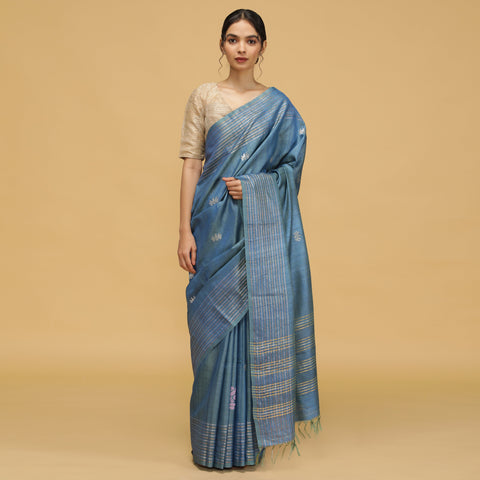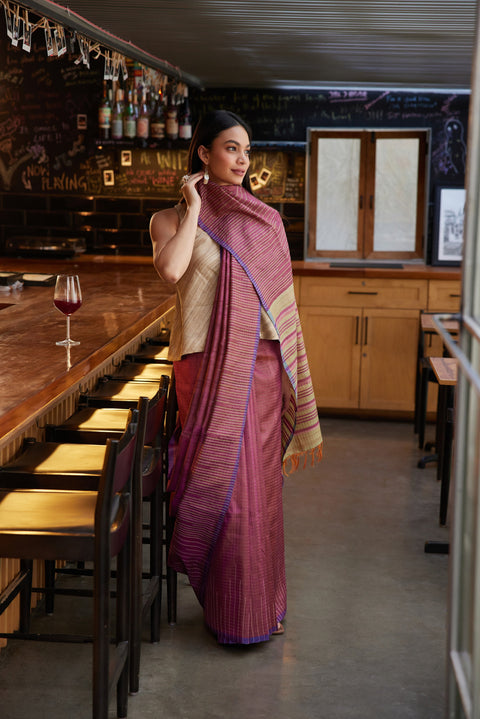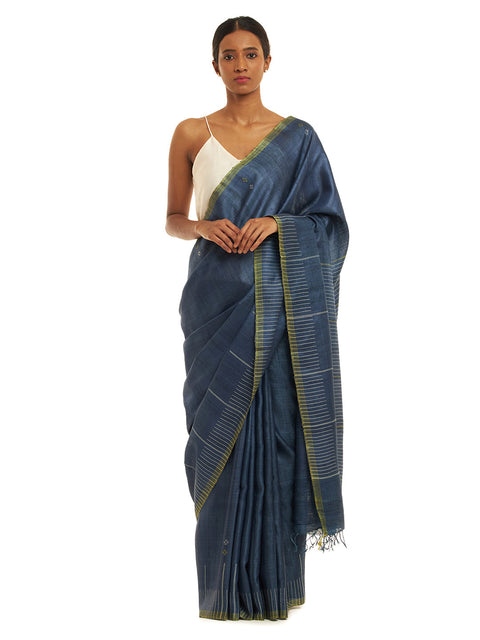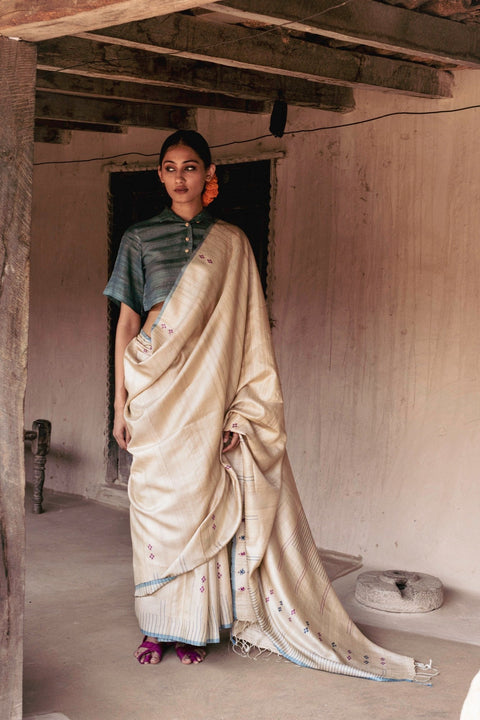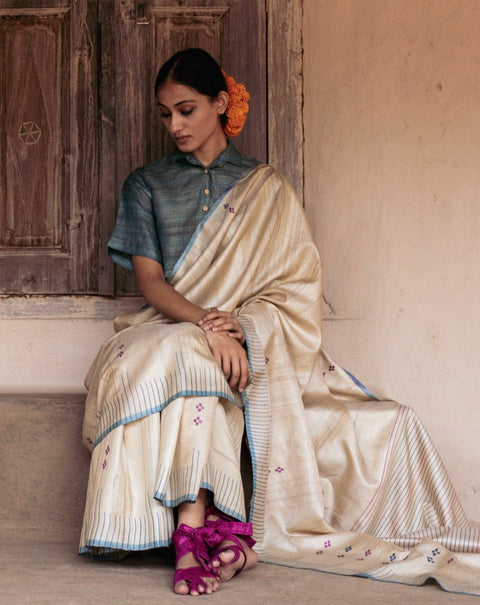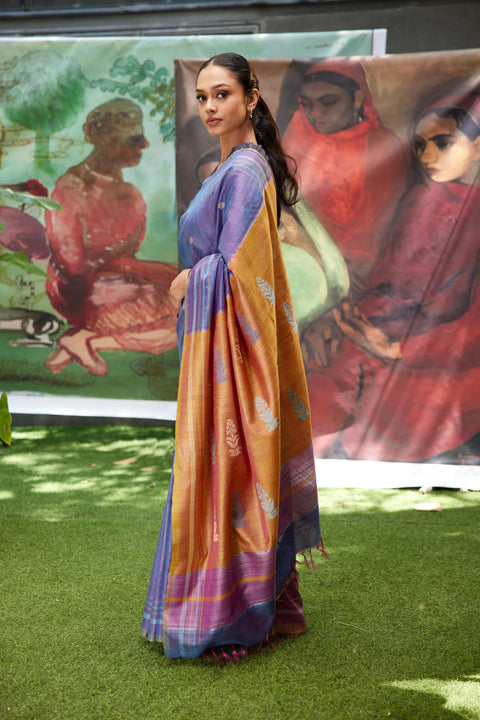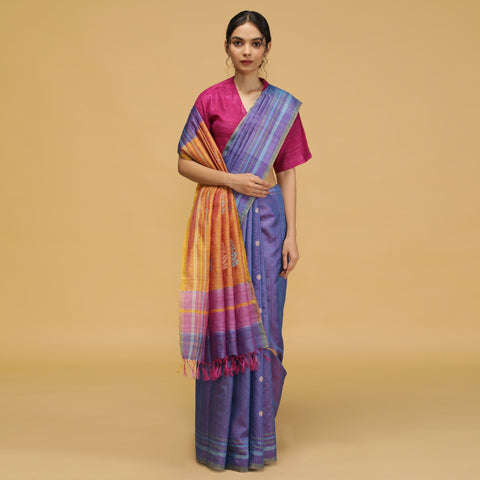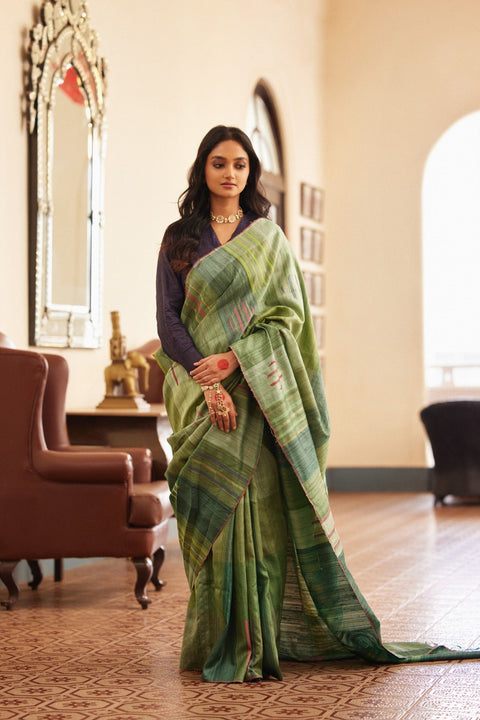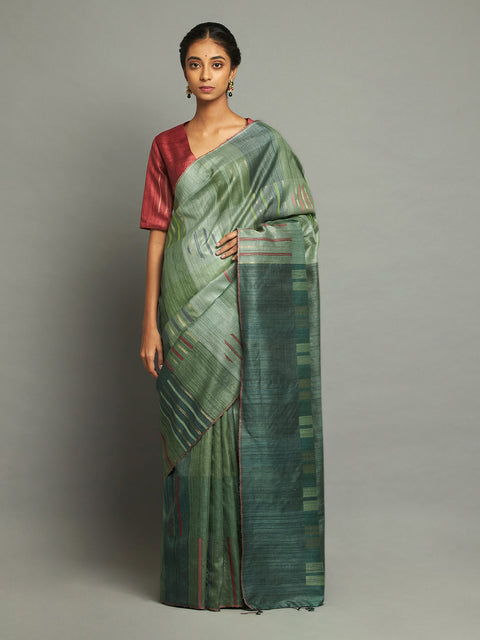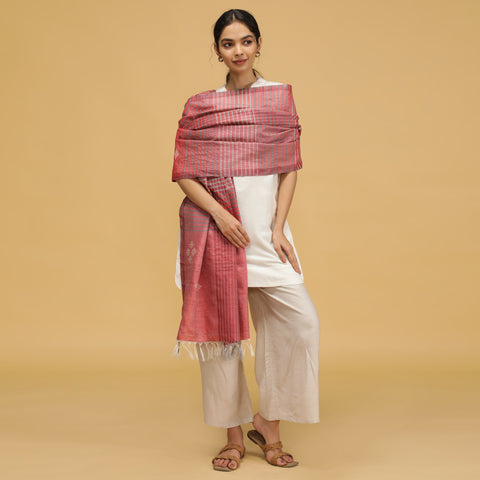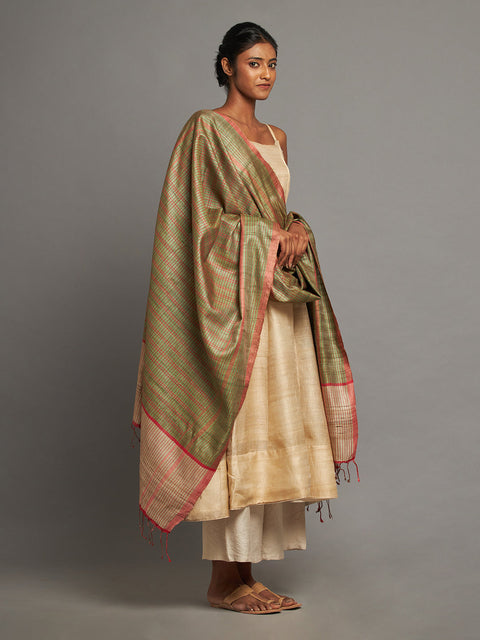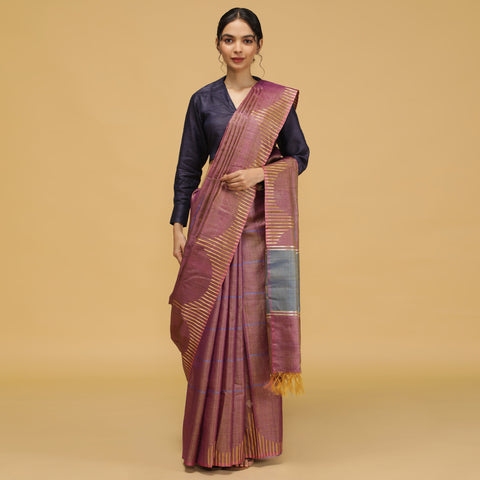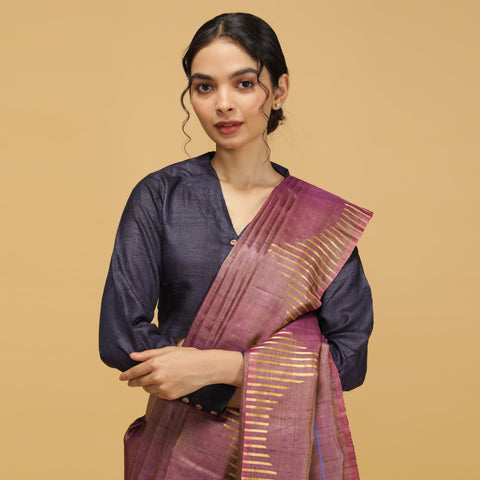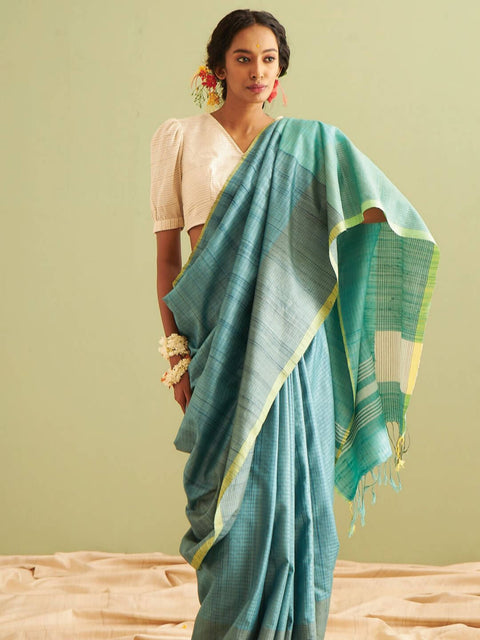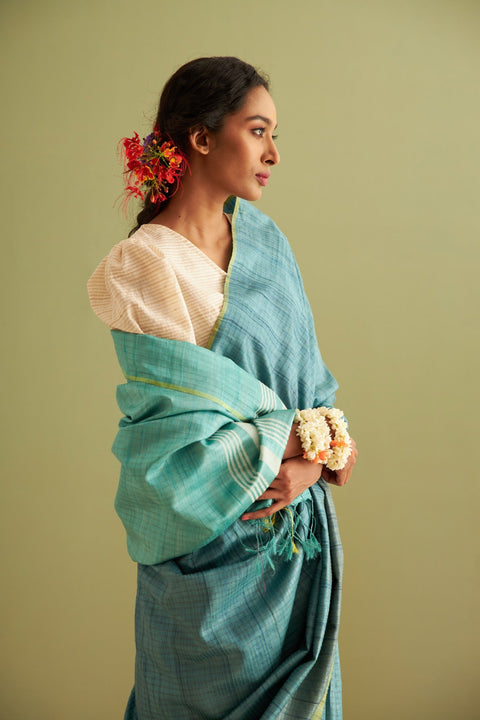
Table of Contents
Picture an Indian woman. What do you see her wearing? Most of you would probably imagine her in a saree. Fair enough, it is one of the most common traditional Indian clothing. And to guess further, most of you would have pictured her in various types of sarees, some made with different materials, some draped in different styles depending on where you are from. Again, we know this is because each state in India has its own version of the garment. Well today we are focusing on one particular type of saree - the Kosa silk saree originating from the state of Chhattisgarh.
Its Origins
Kosa sarees are made from Kosa silk which is a subclass of tussar silk. Kosa Sarees are made from Kosa silk, a variation of tussar silk. A native to Chattisgarh, this silk has been adorned by royals and tribal women alike. The Gupta and Mauryan empires were the first to popularise kosa silk. Later, the mughals favored kosa silk and started wearing it during weddings making it more popular. It is believed to have originated in towns such as Champa, Korba, and Raigarh making it the birthplace of Kosa silk.
From Thread to Saree
The making of a Kosa saree is an art form in itself. The Kosa silk is made by the wild silkworm Antheraea mylitta. They feed on the leaves of indigenous trees like Arjun, Saja, and Sal. The cocoons of these Kosa silkworms are harvested and then spun into silk threads using ancient weaving methods like Thigh-reeling. Artisans then dye the threads using natural dyes and weave them on handlooms giving them their coarse texture and traditional patterns. Each saree reflects countless hours of meticulous work and generational knowledge passed down through families.
The Kosa Lore
Kosa sarees are deeply embedded into the culture of Chattisgarh. This Chhattisgarh saree style is worn for festivals, weddings and several other social events. They symbolise elegance, respect and tradition. Kosa silk is believed to be created by the local tribes for Goddess Durga, thanking her for defeating the demon ‘Maisasur’. It eventually became the identity of the region’s customs and artistic heritage.
The Revival
Despite its rich history, Kosa silk is facing its fair challenges in the modern world. Mass production of the silk encourages the use of synthetic fabrics, removing its authenticity. It also threatens the livelihoods of artisans involved in the process. However, revival efforts are gaining momentum. The Geographical Indication (GI) tag has helped protect the authenticity of Kosa silk. Meanwhile, government initiatives and NGOs have begun to provide training and financial support to weavers. Consumers are encouraged to purchase handloom creations over machine made products.
Kosa in the Contemporary world
The organic origins and handwoven charm of Kosa sarees aligns with the global shift toward sustainable and ethical fashion. The Kosa silk production process is entirely eco-friendy. Designers are jumping onto the current Kosa silk trend by experimenting with blends, cuts, and accessories, introducing Kosa to modern wardrobes. Several celebrities are styling Kosa silk, shining a spotlight on these gorgeous sarees.
Experience of Kosa silk sarees
Besides online platforms and exhibitions, one can buy Kosa sarees at local markets in Chhattisgarh, such as those in Raigarh and Champa. To make sure the Saree is authentic Kosa silk, look for signs of handloom work or irregularities in weave. You could also recognize them by their characteristic rough texture and warm tones.To maintain these sarees, make sure you practice gentle washing and storing them away from sunlight.
Conclusion
We believe that every Kosa saree tells a story. Besides the story of its incredible history, it tells the story of who we are and the way we embrace our culture. So don't just tell your story, wear it.



